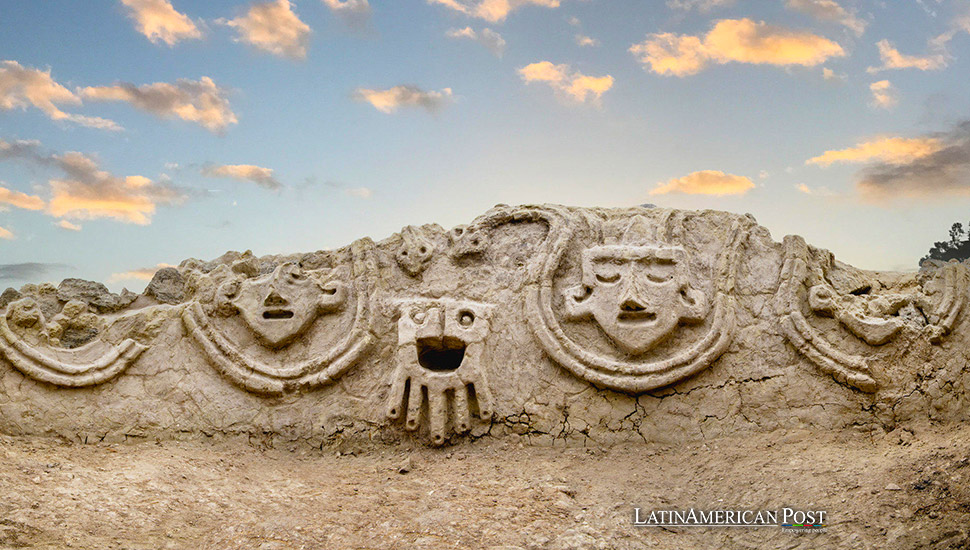Caral in Peru Uncovers the Americas’ Oldest Civilization

Predating the Olmecs and the Inca Empire, the ancient city of Caral in northern Peru reveals the origins of civilization in the Americas. Caral remains an archaeological treasure as a UNESCO World Heritage Site, offering a glimpse into a 5,000-year-old culture.
Nestled within the arid landscape of northern Peru’s Supe Valley lies one of the most extraordinary archaeological sites in the world—the Sacred City of Caral. This ancient city, which predates the Olmecs by 1,500 years and the Inca Empire by four millennia, is the oldest known civilization in the Americas. Although Caral has been recognized as a UNESCO World Heritage Site and draws comparisons to Peru’s more famous Sacred Valley, it has remained mainly in the shadows since its rediscovery 30 years ago. Yet, Caral’s intact pyramids, sunken plazas, and astronomical alignments reveal a sophisticated and peaceful civilization that laid the foundations for future Andean cultures.
The Rediscovery of Caral
The story of Caral’s rediscovery begins with Peruvian archaeologist Ruth Shady Solís, who, in 1994, recognized the significance of the dusty mounds scattered across the Supe Valley. Although others had explored the area before her, Dr. Shady was the first to suspect that these formations were more than just natural hills—they were the remnants of an ancient city. Her subsequent excavations revealed a planned urban center dating back to 3,000 B.C., making Caral contemporary with the earliest civilizations of Mesopotamia and Egypt.
Caral’s strategic location on an alluvial plain, fed by the Supe River, supported a thriving agricultural community. The fertile valley produced avocados, corn, passionfruit, and chili, likely sustaining the city’s inhabitants. The valley’s clear night skies also made it an ideal location for astronomical observations, a practice central to Caral’s cultural and religious life.
A City Built by the Stars
Caral’s layout reflects a deep understanding of astronomy and its influence on daily life. The city’s six pyramids, residential areas, and ceremonial structures were oriented according to the stars and the movements of celestial bodies. The largest of these pyramids, the Greater Pyramid, dominates the landscape and serves as a focal point for religious and social activities.
One of the most intriguing features of Caral is the Huanca, a monolithic stone used for astronomical observations. This stone, along with the recently discovered tip of an observatory, indicates that the people of Caral were highly skilled in tracking the stars and using them to guide their agricultural practices and ceremonial events. These alignments suggest that Caral’s leaders were rulers, astronomers, and priests whose knowledge of the heavens reinforced their authority.
A Peaceful Civilization
Caral stands out among ancient civilizations for its apparent lack of warfare. Archaeological evidence suggests that the Norte Chico people who inhabited Caral were peaceful and unmotivated by conquest. Caral lacks signs of fortifications, weapons, or defensive structures, unlike other ancient societies. Instead, the city was a center of trade, culture, and religious rituals.
Artifacts found at Caral, including unbaked clay figurines, seashell charms, and musical instruments made from condor and llama bones, reveal a society deeply engaged in art, music, and ceremony. These items were likely used in the city’s many festivals and rituals, which are critical components of Norte Chico life. The absence of pottery in Caral, a characteristic of many later Andean cultures, further emphasizes its unique place in history as a pre-ceramic society.
Caral’s Influence on Later Cultures
Caral’s significance extends beyond its own time, as it laid the groundwork for future civilizations in the Andes. The city’s innovative use of quipu, a system of knotted threads to record information, predates the more famous Inca use of the same system by millennia. This early form of record-keeping, along with Caral’s complex urban planning and astronomical knowledge, influenced later cultures such as the Chavín, Nazca, and Inca.
The architectural techniques developed in Caral, particularly shirts—bags woven from plant fibers used in construction—demonstrate an advanced understanding of engineering and earthquake resistance. The city’s structures, built with organic materials from the valley, have withstood the test of time and continue to provide insights into the technological prowess of the Norte Chico people.
Cultural and Astronomical Celebrations
Today, Caral remains an active archaeological site where excavations are ongoing. Visitors to the Zona Arqueológica Caral (ZAC) have the unique opportunity to witness these digs firsthand while exploring the ruins of America’s oldest city. The ZAC is dedicated to preserving Caral’s cultural heritage through responsible tourism, which includes training local villagers as archaeological guides and supporting sustainable agriculture in the region.
Caral’s cultural significance is celebrated through annual events that mark essential astronomical and historical dates. One of the most notable is Caral Raymi, a festival held at the end of October to commemorate the anniversary of Dr. Shady’s project. During this event, the pyramids are illuminated with bonfires, and musical performances occur under the stars, recreating the ceremonial atmosphere that once filled the ancient city. Another event, Runa Raymi, features a culinary and art fair that highlights the region’s cultural traditions.
A Journey Back in Time
For those interested in exploring Caral, the site is accessible as a day trip from Lima. The journey to Caral takes about three hours by car, following the Panamericana Norte highway through a landscape of desert and fog. However, The Supe Valley enjoys perpetual sunshine, starkly contrasting the often gloomy coastal regions. Visitors are advised to bring sunscreen and plenty of water, as the desert heat can be intense.
The archaeological site is open daily from 9:00 AM to 5:00 PM, and admission is 11 Peruvian soles (approximately $3). Visitors must hire a Spanish-speaking guide for a fee of 20 soles ($5) per group of up to 10 people. These guides, many of whom are local villagers trained by the ZAC, offer valuable insights into the history and significance of Caral.
For those who prefer not to drive, buses from Lima’s Gran Terminal Terrestre Plaza Norte travel to Supe village, where taxis can be hired to reach the site. Alternatively, small-group tours from Lima, which include transportation, admission, and a bilingual interpreter, are available for around $130 per person. These tours often include a stop in the nearby town of Barranca, where visitors can sample traditional Peruvian dishes. One is tacu-tacu, a rice pancake that originated in the region.
Exploring Beyond Caral
Caral is just one of approximately 30 ancient settlements in the Supe Valley. These satellite towns, connected through a Ministry of Culture initiative, offer additional opportunities to explore the region’s rich history. Among these sites is Chupacigarro, an astrological hub that provides further evidence of the Norte Chico people’s advanced understanding of the stars. Other nearby sites include the Áspero fishing village and the Végueta agricultural community, which played essential roles in developing the region’s economy and culture.
Also read: El descubrimiento de un culto al agua preincaico de 3.800 años de antigüedad en Perú
Cultural trips to these sites, available as shared or private excursions from Lima, allow visitors to delve deeper into the history of northern Peru. Each site offers its unique perspective on the rise of civilization in the Americas, complementing the experience of visiting Caral.





